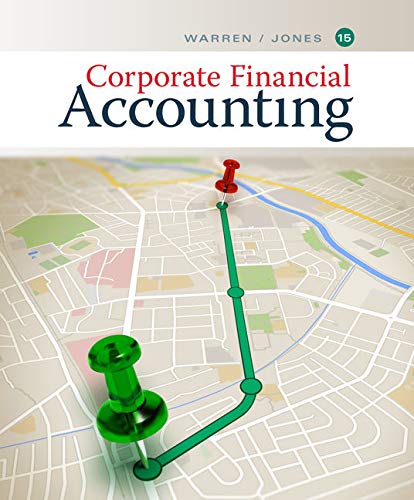
Concept explainers
(a)
Common stock: Common stock is the cash raised by the company by issuing common or ordinary shares to the stockholders. This is an investment for the shareholders for which they receive the dividends from the issuing company, and have voting rights.
Preferred stock: Preferred stock is the cash raised by the company by issuing
Par value: The corporation charter assigns and allocates the dollar value for its share which is referred to as par value.
Debit and credit rules:
- Debit an increase in asset account, increase in expense account, decrease in liability account, and decrease in
stockholders’ equity accounts. - Credit decrease in asset account, increase in revenue account, increase in liability account, and increase in stockholders’ equity accounts.
To journalize: The transactions occurred on January 22, and February 27
(b)
Paid-in capital: This is the total of stock capital contributed by investors, and so, sometimes referred to as contributed capital. It includes preferred stock capital issued, common stock capital issued, and capital issued by the way of sale of
To determine: The total paid in capital as of February 27
Trending nowThis is a popular solution!

Chapter 12 Solutions
Cengagenowv2, 1 Term Printed Access Card For Warren/jones’ Corporate Financial Accounting, 15th
- Lyndon Advisory Group, a consulting firm, had accounts receivable of $22,000 on May 31. During June, payments from customers on account totaled $13,500. At the end of June, Lyndon had accounts receivable amounting to $25,000. What was the amount of consulting services provided to customers on credit during the month of June?arrow_forwardGrant Corporation owns 20% of the common stock of Tanner Industries and uses the fair-value method to account for this investment. Tanner reported net income of $175,000 for 2023 and paid dividends of $95,000 on October 15, 2023. How much income should Grant recognize on this investment in 2023? a. $35,000 b. $19,000 c. $54,000 d. $11,500 e. $70,000arrow_forwardWhat was the direct labor cost on the job?arrow_forward
- What is the answer??arrow_forwardOrville Manufacturing Company's work-in-process inventory on August 1 has a balance of $32,400, representing Job No. 527. During August, $61,500 of direct materials were requisitioned for Job No. 527, and $42,800 of direct labor cost was incurred on Job No. 527. Manufacturing overhead is allocated at 125% of direct labor cost. Actual manufacturing overhead costs incurred in August amounted to $52,500. No new jobs were started during August. Job No. 527 is completed on August 28. Is manufacturing overhead overallocated or underallocated for the month of August and by how much? Correct answerarrow_forwardSolve This Financial Accounting Problemarrow_forward
- Financial Accounting 5 pointsarrow_forwardGiven solution for General accounting question not use aiarrow_forwardGolden State Enterprises had accounts receivable of $215,000 at the beginning of the year. During the year, credit sales amounted to $890,000 and cash collections from customers totaled $825,000. Bad debt write-offs were $18,000. What is the ending accounts receivable balance?need answerarrow_forward
 Financial And Managerial AccountingAccountingISBN:9781337902663Author:WARREN, Carl S.Publisher:Cengage Learning,Century 21 Accounting Multicolumn JournalAccountingISBN:9781337679503Author:GilbertsonPublisher:Cengage
Financial And Managerial AccountingAccountingISBN:9781337902663Author:WARREN, Carl S.Publisher:Cengage Learning,Century 21 Accounting Multicolumn JournalAccountingISBN:9781337679503Author:GilbertsonPublisher:Cengage Financial AccountingAccountingISBN:9781337272124Author:Carl Warren, James M. Reeve, Jonathan DuchacPublisher:Cengage Learning
Financial AccountingAccountingISBN:9781337272124Author:Carl Warren, James M. Reeve, Jonathan DuchacPublisher:Cengage Learning Corporate Financial AccountingAccountingISBN:9781305653535Author:Carl Warren, James M. Reeve, Jonathan DuchacPublisher:Cengage Learning
Corporate Financial AccountingAccountingISBN:9781305653535Author:Carl Warren, James M. Reeve, Jonathan DuchacPublisher:Cengage Learning College Accounting, Chapters 1-27AccountingISBN:9781337794756Author:HEINTZ, James A.Publisher:Cengage Learning,
College Accounting, Chapters 1-27AccountingISBN:9781337794756Author:HEINTZ, James A.Publisher:Cengage Learning,





